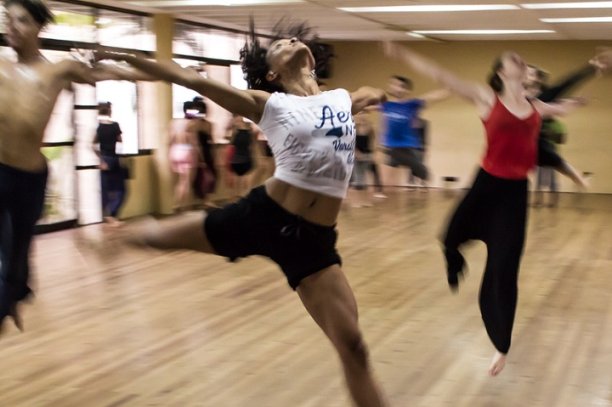As a dance teacher, your role goes beyond teaching choreography and steps. Your ultimate goal is to create a winning team culture that fosters a sense of camaraderie, dedication, and excellence amongst your dancers.
But how can you achieve this goal? What strategies can you implement to cultivate a positive and cohesive team environment? Look no further, as this blog post will provide you with valuable insights and tips on how to create a winning team culture as a dance coach.
So get ready to take your coaching to the next level and discover the key elements of a successful team culture in the world of dance.

Table of Contents
1. Set Clear Goals and Expectations
By defining clear goals, the team members have a common understanding of what they are working towards and can focus their efforts towards achieving them. This also sets a clear direction for the team and creates a sense of purpose and motivation.
Besides, having clear expectations helps to establish a framework for behavior and performance. This promotes accountability and responsibility within the team.
2. Lead by Example
This means embodying the values and traits that you want to see in your team, both on and off the dance floor. It is important to not just tell your team what to do, but also show them through your actions. This involves demonstrating discipline, determination, and a positive attitude at all times.
By setting a good example, you inspire your dancers to work harder and strive for excellence. Leading by example also promotes a sense of unity and trust within the team. This in turn creates a strong and resilient foundation for success.
3. Encourage Communication and Collaboration
Effective communication allows for a clear understanding of goals and expectations. In turn, this can lead to a smooth and successful team dynamic. By fostering an open and supportive environment for communication, dancers feel comfortable expressing their thoughts and ideas, leading to greater creativity and problem-solving.
Collaboration, on the other hand, promotes teamwork and unity, allowing dancers to work together towards a common goal. This not only strengthens the team but also builds trust and respect among teammates.
4. Foster a Supportive Environment
This means creating a safe and inclusive space where dancers feel comfortable expressing themselves and supporting each other. This can be achieved by setting clear guidelines for respectful behavior and enforcing them. It also involves listening to the concerns and ideas of team members and encouraging open communication and collaboration.
By fostering a supportive environment, dancers are more likely to feel valued and motivated. This leads to a stronger sense of team unity and a positive, winning atmosphere. It sets the foundation for a successful team dynamic and allows dancers to thrive both individually and as a group.
5. Celebrate Individual Strengths
Every dancer brings a unique set of skills and talents to the team, and as a coach, it is important to recognize and celebrate these strengths. Doing so, not only boosts the confidence and self-esteem of each dancer but also fosters a sense of appreciation and support within the team.
In a competitive environment, it is easy for dancers to compare themselves to others and feel discouraged. Yet, celebrating individual strengths shifts the focus to individual growth and improvement. It creates a positive and winning team culture.
6. Promote a Growth Mindset
This means fostering an environment where dancers understand that with effort, determination, and continuous learning, they can improve and achieve their goals. By emphasizing the power of yet and encouraging dancers to view mistakes as opportunities for growth, a growth mindset helps to build resilience and a positive mindset within the team.
It also creates a sense of unity and teamwork, as dancers support and motivate each other to reach their full potential. As a freestyle dance teacher, promoting a growth mindset helps to cultivate a team culture of continuous improvement and success on and off the dance floor.
7. Provide Constructive Feedback
This means giving feedback that is both supportive and corrective, to help your team improve and grow. Constructive feedback should be specific, timely, and delivered positively. This not only helps dancers understand what they need to work on, but it also shows that you are invested in their development as dancers.
By providing constructive feedback, you are fostering a culture of continuous improvement and teamwork, where dancers feel supported and motivated to reach their full potential. This leads to a stronger, more successful team.
8. Lead With Passion and Enthusiasm
One of the most effective strategies for achieving this is by leading with passion and enthusiasm. This means showing a genuine love and excitement for dance and inspiring your team to do the same. By using resources such as the ultimate dance teacher kit, you can introduce new and innovative ways to keep your dancers motivated and engaged.
With a passionate and enthusiastic attitude, you can instill a sense of drive and determination within your team. This will lead them to achieve success and create a thriving team culture.
9. Celebrate Successes and Learn From Failures
When your team achieves a goal or performs well, it is important to acknowledge their hard work and celebrate their success. This not only boosts team morale and motivation but also fosters a positive and supportive environment. Equally important is to learn from failures and use them as opportunities for growth.
By encouraging your team to reflect on what went wrong and how to improve, you are promoting a culture of continuous learning and development. This approach helps your team become stronger and more resilient. It also creates a sense of camaraderie and unity within the group.
Implement Strategies and Foster a Positive Environment as a Dance Coach
As a dance coach, implementing strategies to create a winning team culture is crucial in developing a strong and successful team. It requires effective communication, positive reinforcement, and fostering a supportive and inclusive environment.
By prioritizing these strategies, you can inspire and empower your team to reach their full potential. So, let’s take action and start building a winning team culture today!
Looking for more tips and advice? You’re in the right place! Make sure to bookmark our page and come back to check out more interesting articles.




